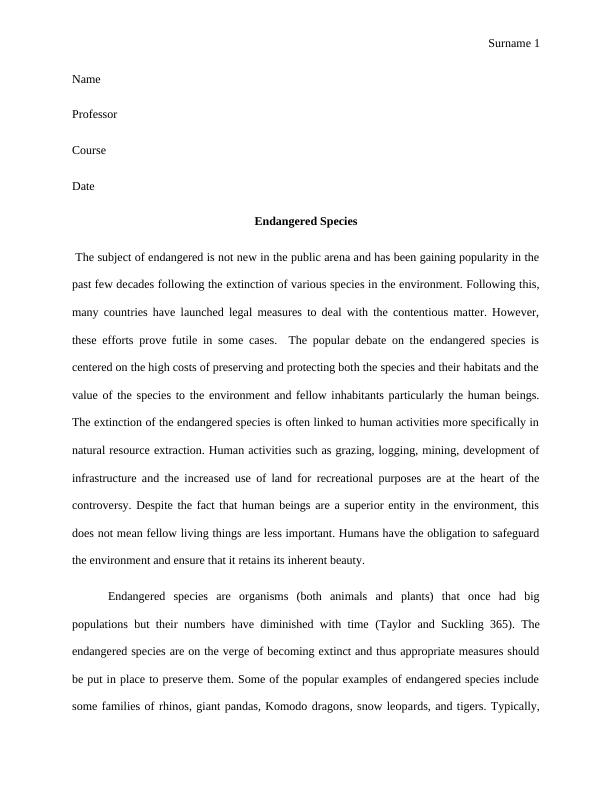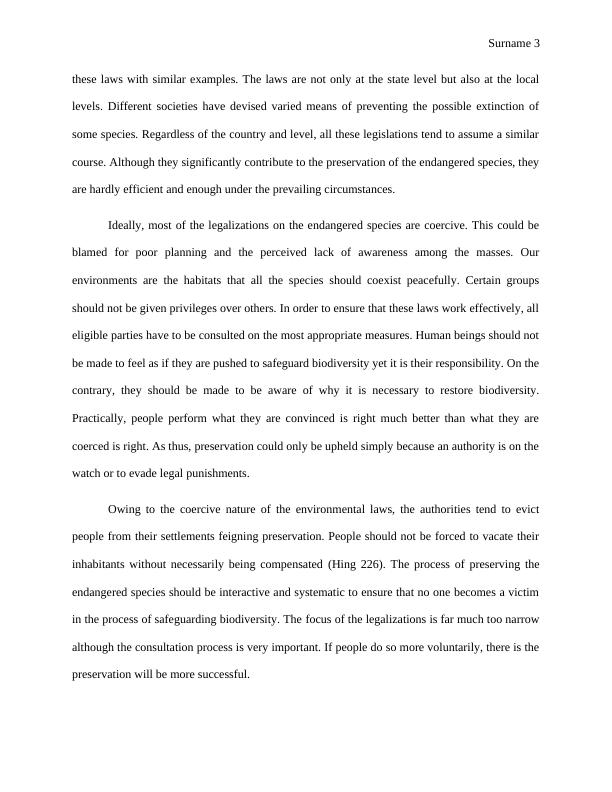Endangered Species: Importance, Legal Concerns, and Causes of Extinction
Discussing the importance of protecting endangered species and their impact on people's lives, and proposing actions to protect them.
13 Pages3986 Words58 Views
Added on 2023-06-10
About This Document
This article discusses the importance of endangered species, legal concerns, and causes of extinction. It highlights the impact of endangered species on human lives and the environment. The article also covers the United States’ Endangered Species Act and the need for a more integrated approach to conservation.
Endangered Species: Importance, Legal Concerns, and Causes of Extinction
Discussing the importance of protecting endangered species and their impact on people's lives, and proposing actions to protect them.
Added on 2023-06-10
ShareRelated Documents
End of preview
Want to access all the pages? Upload your documents or become a member.
Captivity for Conservation
|9
|1891
|228
The Impact of Human Beings on Mass Extinctions
|5
|1194
|70
Forest Conservation: An Analysis of Crown Forest Sustainability Act and Endangered Species Act for Ontario
|15
|3851
|469
The Impact of Land Clearing on the Environment
|21
|936
|136
Biological & Learning Psychology BEHL 2012
|8
|1718
|216
Engineering Sustainable Development: Land Use Changes and Bio-diversity
|4
|1826
|22




